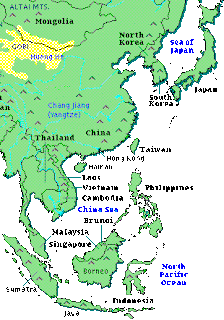Back Out on the Open Sea- what's next? Plague? Pestilence?
Chugging along to Taiwan-yes let's get a little closer to Japan.
To recap we did the Charms of Manila Tour Friday morning (pre earthquake). Can you imagine being on a bus tour in "old " Manila and getting the TWO STEP? And who would check to see if there was toilet paper while dashing into the lieu- we were in a city of 10 million people for gosh sakes of course there is TP in the stall. Oops. Bubba suggested I get off the bus and take one of those horse drawn calesas (carriage). He said at this point I would blend more with the horse and he was afraid I would be voted off the bus soon. I started collecting napkins immediately and did my duty to warn others.
 We did visit the beautiful San Agustin Church, where I frantically looked for an Icon or Statute that was the Saint of Relief for this condition. Surely there must be something for tourists from Boca Raton? There! There! THE SISTERS OF BOCA! Recognizing Chanel when I see it-relief is just a donation oops I mean a prayer away!
We did visit the beautiful San Agustin Church, where I frantically looked for an Icon or Statute that was the Saint of Relief for this condition. Surely there must be something for tourists from Boca Raton? There! There! THE SISTERS OF BOCA! Recognizing Chanel when I see it-relief is just a donation oops I mean a prayer away!

I did find a lady that worked in the gift shop that gave me medicine for LBM. LBM? Bubba said, "You did what? Took medicine from a stranger? Whadareyanutz!" Oh Bubs, I was desperate and not quite sure about those Sisters of Boca.
 We did visit the beautiful San Agustin Church, where I frantically looked for an Icon or Statute that was the Saint of Relief for this condition. Surely there must be something for tourists from Boca Raton? There! There! THE SISTERS OF BOCA! Recognizing Chanel when I see it-relief is just a donation oops I mean a prayer away!
We did visit the beautiful San Agustin Church, where I frantically looked for an Icon or Statute that was the Saint of Relief for this condition. Surely there must be something for tourists from Boca Raton? There! There! THE SISTERS OF BOCA! Recognizing Chanel when I see it-relief is just a donation oops I mean a prayer away!
I did find a lady that worked in the gift shop that gave me medicine for LBM. LBM? Bubba said, "You did what? Took medicine from a stranger? Whadareyanutz!" Oh Bubs, I was desperate and not quite sure about those Sisters of Boca.
After the tour, I barely made it to the cabin and stayed there for the rest of the day and all of the next. As my pal Sandy pointed out-go with it- people pay a lot of money for a good cleansing. Flashbacks of my attempt at a colonic....
 Bubba did the Corregidor Tour with the guys. Corregidor is a small rocky island in the Philippines about 30 miles west of Manila which is strategically located at the entrance of Manila Bay. This island fortress stands as a memorial for the courage, valor, and heroism of its Filipino and American defenders who bravely held their ground against the overwhelming number of invading Japanese forces during World War II. One of Bubs new buds, retired Air Force/Rocket scientist at the Cape- now that's a match for you Bubs. "A little dry but very interesting but I'm not sure he is quite ready for Boca"....ya think?
Bubba did the Corregidor Tour with the guys. Corregidor is a small rocky island in the Philippines about 30 miles west of Manila which is strategically located at the entrance of Manila Bay. This island fortress stands as a memorial for the courage, valor, and heroism of its Filipino and American defenders who bravely held their ground against the overwhelming number of invading Japanese forces during World War II. One of Bubs new buds, retired Air Force/Rocket scientist at the Cape- now that's a match for you Bubs. "A little dry but very interesting but I'm not sure he is quite ready for Boca"....ya think?
More Boca's Cup of Tea.
 Remember ol' Imelda Marcos and her 3000 pair of shoes,1000 handbags, 825 furs- alleged $35 bill in assets. fled to Hawaii in 1986 ....who knew she is currently a Congress person in this country?
Remember ol' Imelda Marcos and her 3000 pair of shoes,1000 handbags, 825 furs- alleged $35 bill in assets. fled to Hawaii in 1986 ....who knew she is currently a Congress person in this country?
"Win or lose, we go shopping after the election."
The people are delightful and English is their first language.
I was a bit rusty on my Philippines history so a quick review was in order- per Philippine History Web....yes I know it is really long but a quick historic overview of this volatile little island is amazing.
My very special Uncle Miley (my Mom's brother) served in the Army as a tank crewman in the Philippines - landed on Luzon (Manila Island) to retake the Philippine Islands from the Japs.
Philippine History During the American Era
The Spanish-American war which started in Cuba, changed the history of the Philippines. On May 1, 1898, the Americans led by U.S. Navy Admiral George Dewey, in participation of Emilio Aguinaldo, attacked the Spanish Navy in Manila Bay. Faced with defeat, the Philippines was ceded to the United States by Spain in 1898 after a payment of US$ 20 million to Spain in accordance with the "Treaty of Paris" ending the Spanish-American War. On June 12, 1898, Filipinos led by Emilio Aguinaldo declared independence. This declaration was opposed by the U.S. who had plans of taking over the colony. And this led to a guerrilla war against the Americans. In 1901, Aguinaldo was captured and declared allegiance to the United States. On the same year, William Howard Taft was appointed as the first U.S. governor of the Philippines. The U.S. passed the Jones Law in 1916 establishing an elected Filipino legislature with a House of representatives & Senate. In 1934, the Tydings-McDuffie Act was passed by the U.S. Congress, established the Commonwealth of the Philippines and promised Philippine independence by 1946. The law also provided for the position of President of the Commonwealth of the Philippines. On the May 14, 1935 elections, Manuel L. Quezon won the position of President of the Philippine Commonwealth. In accordance with the Tydings-McDuffie Act of 1934, The Philippines was given independence on July 4, 1946 and the Republic of the Philippines was born.
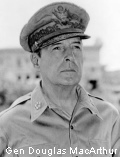
Philippine History During the Japanese Occupation

Philippine History During the Japanese Occupation
On December 8, 1941, the Japanese invades the Philippines hours after bombing Pear Harbor in Hawaii. While the forces of Gen. Douglas MacArthur retreated to Bataan, the Commonwealth government of President Quezon moved to Corregidor Island. Manila was declared an open city to prevent further destruction. After the fall of Bataan on April 9, 1942 and Corregidor, In March 1942, MacArthur & Quezon fled the country and by invitation of President Roosevelt, the Commonwealth government went into exile to Washington D.C. American and Filipino forces surrendered in May 6, 1942. Soon a guerrilla war against the Japanese was fought by the Philippine & American Armies while Filipinos were enduring the cruelty of the Japanese military against civilians.
Prior to Quezon's exile, he advised Dr. Jose P. Laurel to head and cooperate with the Japanese civilian government in the hope that the collaboration will lead to a less brutality of the Japanese towards the Filipinos. Rightly or wrongly, President Laurel and his war time government was largely detested by the Filipinos.
In October 1944, Gen. MacArthur with President Sergio Osmeña (who assumed the presidency after Quezon died on August 1, 1944 in exile in Saranac Lake, New York) returned and liberated the Philippines from the Japanese.
On July 4, 1946, Manuel Roxas of the Nationalista Party was inaugurated as the first President of the Republic of the Philippines. Roxas died in April 1948. He was succeeded by Elpidio Quirino. Both Roxas & Quirino had to deal with the Hukbalahap, a large anti-Japanese guerrilla organization which became a militant group that discredited the ruling elite. The group was eventually put down by Pres. Quirino's Secretary of Defense, Ramon Magsaysay.
Magsaysay defeated Quirino in the 1953 elections. He was a popular president and largely loved by the people. Magsaysay died in an airplane crash on March 17, 1957 and was succeeded by Carlos Garcia.
Diosdado Macapagal won the 1961 presidential elections and soon after he changed history by declaring June 12 as independence day - the day Emilio Aguinaldo declared independence in Cavite from Spain in 1898. Aguinaldo was the guest of honour during the fist Independence Day celebrations in 1962.
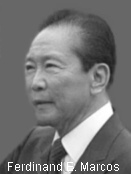 Philippine History During the Martial Law Regime
Philippine History During the Martial Law Regime
Ferdinand E. Marcos won the presidency in 1965 and was the first president to be re-elected for a second term in office. Marcos He embarked on an ambitious public works program and maintained his popularity through his first term. His popularity started to decline after his re-election due to perceived dishonesty in the 1969 campaign, the decline in economic growth, government corruption and the worsening peace & order. He declared Martial Law in 1972 near the end of his second & final term in office. Staunch oppositionist, Senator Benigno "Ninoy" Aquino (later went on self exile to the U.S.) & Senator Jose Diokno were one of the first to be arrested. During the Martial Law years, Marcos held an iron grip on the nation with the support of the military. Opposition leaders we imprisoned and the legislature was abolished. Marcos ruled by presidential decrees.
Post Martial Law up to the Present Time
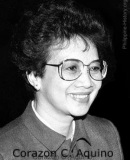 The 21-year dictatorial rule of Marcos with wife Imelda ended in 1986 following a popular uprising that forced them to exile to Hawaii. Corazon "Cory" Aquino, the wife of exiled and murdered opposition leader Benigno Aquino who was perceived to have won a just concluded snap election was installed as president. Aquino restored civil liberties, initiated the formation of a new constitution and the restoration of Congress.
The 21-year dictatorial rule of Marcos with wife Imelda ended in 1986 following a popular uprising that forced them to exile to Hawaii. Corazon "Cory" Aquino, the wife of exiled and murdered opposition leader Benigno Aquino who was perceived to have won a just concluded snap election was installed as president. Aquino restored civil liberties, initiated the formation of a new constitution and the restoration of Congress.
On September 16, 1991, despite the lobbying of Aquino, the Senate rejected a new treaty that would allow a 10-year extension of the US military bases in the country.
In the1992 elections, Pres. Aquino endorsed Secretary of Defense Fidel Ramos as her successor, which Ramos won with a slight margin over his rival, Miriam Defensor-Santiago. During the Ramos presidency, he advocated "National Reconciliation" and laid the ground work for the resolution of the secessionist Muslim rebels in the southern Philippine Island of Mindanao. The Moro National Liberation Front (MNLF) led by Nur Misuari, signed a peace agreement with the government. However a splinter group, The Moro Islamic Liberation Front (MILF) led by Hashim Salamat continued to fight for an Islamic state. Ramos worked for the economic stability of the country and the improvement of the infrastructure facilities like telecommunications, energy and transportation.
Joseph Ejercito Estrada, a popular actor, succeeded Ramos in 1998 with Gloria Macapagal-Arroyo (daughter of former President Diosdado Macapagal) as his Vice-President. Estrada's lack of economic & management skills plunged the economy deeper as unemployment increased and the budget deficit ballooned. In October 2000, Estrada's close friend Luis "Chavit" Singson accused Estrada of receiving millions of pesos from "Jueteng", an illegal numbers game. Soon after, Congress impeached Estrada on grounds of bribery, graft and corruption, betrayal of public trust and culpable violation of the constitution. His impeachment trial at the Senate was however blocked by his political allies in the Senate. Shortly after the evidence against Estrada was blocked at the Senate, thousands of people rallied up at the EDSA Shrine, site of the People Power Revolution which ousted Marcos in 1986.
In January 2001, the Supreme Court declared Joseph Estrada unable to rule in view of mass resignations from his government and declared Vice-President Gloria Macapagal-Arroyo as his constitutional successor. To this date, Estrada remains detained facing graft charges before the Sandigan Bayan, the Anti-graft court.
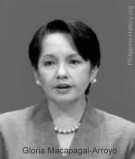 Gloria Macapagal-Arroyo, completed the remaining term of Estrada and run for re-election against Fernando Poe, Jr., another popular actor and a friend of Estrada in May 2004. Arroyo with her running mate Noli de Castro was eventually proclaimed the winners of the Presidential & Vice-Presidential elections. She has been advocating a change from a Presidential form of government to a Parliamentary form of government.
Gloria Macapagal-Arroyo, completed the remaining term of Estrada and run for re-election against Fernando Poe, Jr., another popular actor and a friend of Estrada in May 2004. Arroyo with her running mate Noli de Castro was eventually proclaimed the winners of the Presidential & Vice-Presidential elections. She has been advocating a change from a Presidential form of government to a Parliamentary form of government.
Arroyo's husband & son has been rumored to be receiving money from gambling lords and this has tainted her reputation. A tape recording of Arroyo talking with a commissioner on elections surfaced establishing impropriety by Arroyo and suggesting that she might have influenced the outcome of the last elections. Demonstrations followed in June 2005 calling for Arroyo to resign.
On the eve of the anniversary of the "People Power Revolution" on February 24, 2006, the government took pre-emptive measures to quash alleged plots to unseat Arroyo through massive rallies and a coup. Arroyo declared a "State of Emergency" the next day mobilizing the police and the military averting any destabilization moves.
May 14, 2007 - National Elections for Senators, Congressmen, Governors, Mayors and local officials. Although there are instances of violence and allegations of cheating specially in Mindanao, this elections is considered by many as one of the most peaceful elections conducted in Philippines.
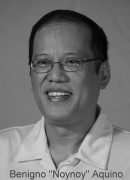 September 12, 2007 - Former President Joseph Ejercito Estrada is convicted of plunder by the Sandiganbayan, the anti-graft court and is sentenced to 40 years imprisonment. He is the first former president ever convicted of any crime in Philippine history. Six weeks later, on October 26, Estrada was pardoned by President Arroyo.
September 12, 2007 - Former President Joseph Ejercito Estrada is convicted of plunder by the Sandiganbayan, the anti-graft court and is sentenced to 40 years imprisonment. He is the first former president ever convicted of any crime in Philippine history. Six weeks later, on October 26, Estrada was pardoned by President Arroyo.
Benigno Simeon Cojuangco Aquino III, affectionately called "Noynoy", the son of former President Corazon C. Aquino and the late Senator Benigno Aquino, won the May 10, 2010 presidential elections. He was proclaimed president on June 30, 2010 at Rizal Park in Manila. Former President Gloria Arroyo, was elected congresswoman for the second district of Pampanga. This was the first computerized national elections in Philippine history.
SUCH A COLORFUL LAST 30 YEARS. Let's all pray they are organized now....
